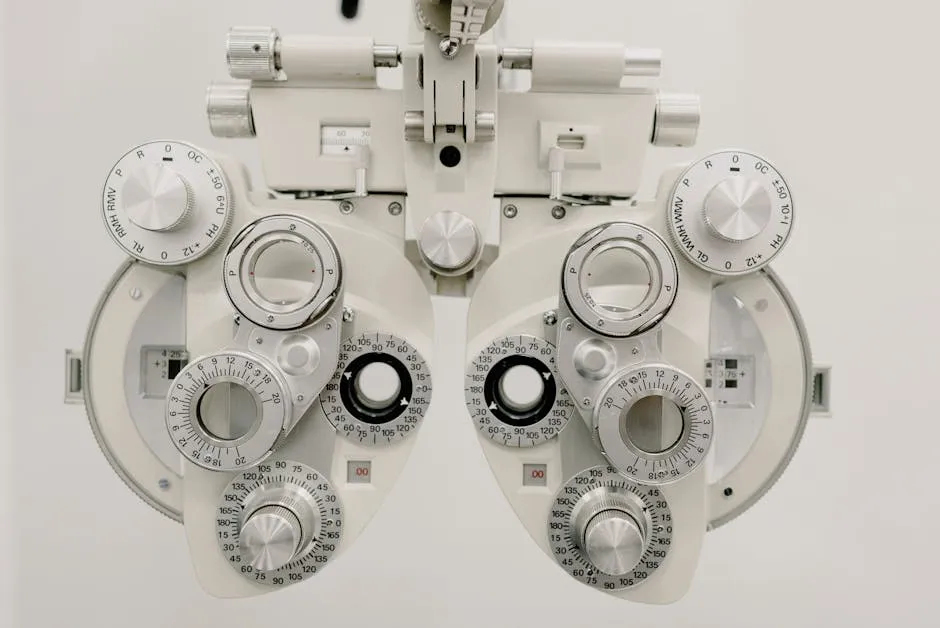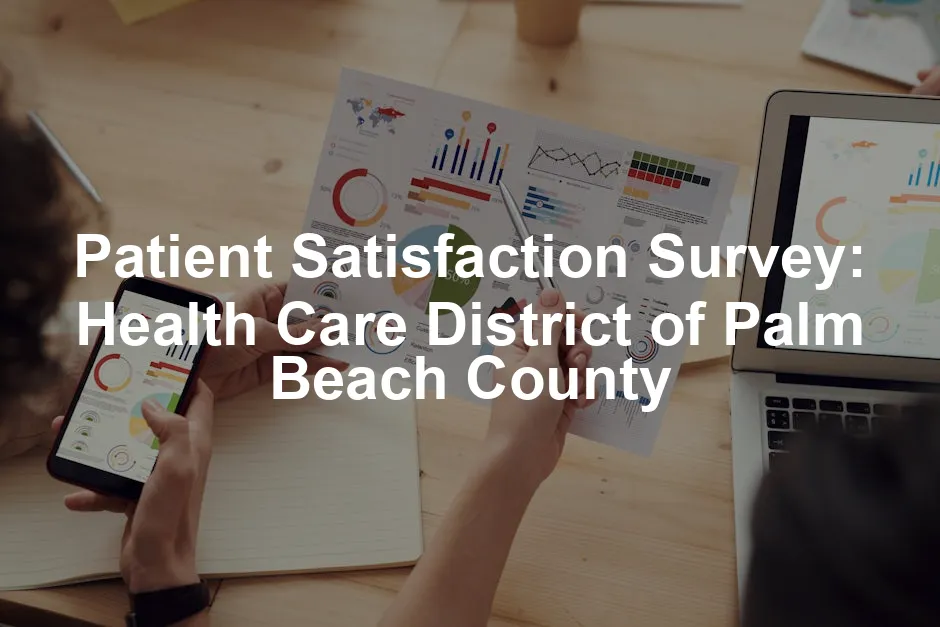Introduction
Patient satisfaction is crucial in healthcare. It reflects how well patients perceive their care experience. The Health Care District of Palm Beach County prioritizes this satisfaction through regular surveys. These surveys help identify areas for improvement and enhance patient care. This article explores the survey process and its significance in shaping healthcare services.
If you’re keen to dive deeper into the world of patient satisfaction, consider picking up HCAHPS: Hospital Consumer Assessment of Healthcare Providers and Systems. This book offers insights that can help improve your understanding of patient feedback.
Summary and Overview
Patient satisfaction surveys collect feedback on patients’ experiences. They play a vital role in healthcare by informing providers about strengths and weaknesses. The Health Care District of Palm Beach County actively seeks patient feedback through these surveys. We will cover the survey process, the types of feedback collected, and how this input shapes healthcare services. Understanding patient perspectives is key to improving care quality.

For those interested in crafting their own surveys, SurveyMonkey Survey Software is a fantastic tool that can help you gather meaningful insights from your patients.
The Role of Patient Satisfaction Surveys in Healthcare
Importance of Patient Satisfaction
Patient satisfaction measures how well healthcare services meet patient expectations. High satisfaction levels are linked to better health outcomes. When patients are satisfied, they are more likely to adhere to treatment and return for future care. Statistics show that hospitals with higher patient satisfaction scores often report lower readmission rates and better overall health outcomes.

What is a Patient Satisfaction Survey?
A patient satisfaction survey is a tool for gathering patient feedback. It typically includes questions about the quality of care, communication, and hospital environment. Feedback focuses on various aspects, such as responsiveness of staff and clarity of discharge instructions. The HCAHPS (Hospital Consumer Assessment of Healthcare Providers and Systems) survey is a national standard used to ensure consistency and reliability in these assessments.
HCAHPS and Its Implementation
Overview of HCAHPS
HCAHPS stands for Hospital Consumer Assessment of Healthcare Providers and Systems. This survey is vital for measuring patient satisfaction across the country. It includes 27 specific questions that cover essential aspects of the patient’s hospital experience. Topics range from communication with doctors and nurses to the cleanliness of the facility.
Transparency in reporting HCAHPS results fosters trust and accountability. Patients can compare hospitals based on these standardized scores, which ultimately helps them make informed choices about their care.

For anyone looking to enhance their understanding of patient experiences, Patient Satisfaction Surveys: A Comprehensive Guide is an excellent resource.
How HCAHPS Data is Used
The Health Care District of Palm Beach County uses HCAHPS data to enhance patient services. By analyzing feedback, they identify trends and areas needing improvement. This information is crucial for benchmarking against national averages, ensuring the district remains competitive.
In recent evaluations, the district has consistently performed above the national average in key areas. For example, 85% of patients reported high satisfaction with nurse communication. These statistics highlight the district’s commitment to patient-centered care.

Responding to Patient Feedback
Actions Taken Based on Survey Results
Patient feedback directly influences operational changes within the Health Care District. When survey responses indicate specific issues, such as long wait times, action is taken promptly. For instance, the district recently revamped its scheduling system to reduce delays.
Staff training is also adjusted based on survey insights. If communication is highlighted as a concern, additional training is provided. This commitment to improvement ensures that patient care continuously evolves.

Communication with Patients
Keeping patients informed about changes made from their feedback is essential. The district utilizes newsletters, social media, and in-person conversations to share updates. This transparency enhances trust and encourages ongoing patient engagement.
Strategies for improving communication include regular patient forums. These forums allow patients to voice concerns and learn about new initiatives. By actively involving patients, the Health Care District strengthens its services and builds a supportive community.

The Impact of Technology on Patient Satisfaction Surveys
Digital Transformation of Surveys
The Health Care District of Palm Beach County has embraced a digital approach to patient satisfaction surveys. This shift from paper to online surveys offers numerous advantages. First, digital surveys enhance response rates significantly. Patients can easily access and complete surveys at their convenience. This flexibility results in a broader range of feedback.
Moreover, technology streamlines data analysis. Healthcare providers can quickly gather insights from responses, allowing for swift identification of trends. Tools like SurveyMonkey or Google Forms facilitate this process. These platforms help craft customized questions tailored to specific services. As a result, the district can better understand patient experiences and areas for improvement.

Tailoring Surveys to Patient Needs
Customization is key in the patient satisfaction survey process. The Health Care District designs surveys to cater to the diverse services offered. For instance, different departments may require unique questions based on their patient demographics. This targeted approach ensures that feedback is relevant and actionable.
Capturing diverse patient experiences is crucial. Patients come from various backgrounds and have different needs. Tailoring surveys helps capture these unique perspectives, leading to more comprehensive insights. When patients feel their voices matter, they are more likely to engage, ultimately enhancing the quality of care provided.

Funding and Reimbursement Implications
Connection Between Patient Satisfaction and Funding
Patient satisfaction scores play a vital role in healthcare funding. Programs like Value-Based Purchasing (VBP) link these scores directly to reimbursement rates. Hospitals that achieve higher satisfaction scores can receive increased financial support. This connection incentivizes healthcare providers to prioritize patient experiences.
Statistics reveal the significant impact of satisfaction on funding. For example, hospitals with top-tier patient satisfaction ratings may see reimbursement increases of up to 2%. This financial boost allows for continued investment in patient care improvements and staff training. As a result, focusing on patient satisfaction not only benefits patients but also helps sustain the healthcare system.

Challenges in Gathering Feedback
Common Issues with Survey Responses
Gathering patient feedback can be tricky. One major issue is response bias. Often, only those with extreme experiences, good or bad, fill out surveys. This can skew results, making it hard to get an accurate picture of patient satisfaction.
Inclusivity is another concern. Surveys must cater to diverse patient populations. If questions aren’t easy to understand, some patients might feel excluded. This is especially true for elderly individuals or those with language barriers.
To tackle these challenges, consider these solutions. First, encourage all patients to participate, not just those with strong opinions. Offering multiple ways to complete surveys—like online and paper formats—can help. Second, design questions that are clear and simple. Use straightforward language to ensure everyone can provide feedback. Lastly, consider focus groups to gather more nuanced insights. Engaging with patients directly can lead to richer feedback.

Conclusion
Patient satisfaction surveys are vital for enhancing healthcare services. They provide essential insights that help improve care quality. The Health Care District of Palm Beach County remains committed to listening to patient feedback. Your experiences matter and drive meaningful changes in healthcare.
We encourage you to participate in surveys after your visits. Your input can help shape future healthcare. Share your experiences and help us continue to improve!
FAQs
What is the purpose of a patient satisfaction survey in healthcare?
Patient satisfaction surveys serve multiple goals in healthcare. They primarily aim to improve the quality of care. By gathering patient feedback, providers can identify strengths and weaknesses. This feedback helps hospitals focus on areas needing enhancement. Ultimately, the goal is to create a better experience for patients.
How does the Health Care District of Palm Beach County use survey results?
The Health Care District of Palm Beach County takes survey feedback seriously. When patients share their experiences, the district analyzes the data to implement changes. For example, if many patients report long wait times, the district may revise scheduling practices. Staff training also adapts based on survey insights. These actions ensure that patient care consistently improves.
What is HCAHPS and why is it important?
HCAHPS stands for Hospital Consumer Assessment of Healthcare Providers and Systems. This national survey measures patient satisfaction across hospitals. It includes standardized questions about key aspects of care, such as communication and environment. HCAHPS results promote transparency and allow patients to compare hospitals. This standardization is crucial for consistent quality improvement in healthcare.
How can patients participate in satisfaction surveys?
Patients can participate in satisfaction surveys easily. After a hospital visit, they may receive a survey via phone or email. These surveys are typically brief and straightforward. Patients can also fill them out online for convenience. Every response contributes to enhancing healthcare services within the district.
What challenges do healthcare providers face in collecting survey data?
Healthcare providers encounter several challenges in gathering survey data. One issue is response bias, where only those with strong feelings respond. This can distort the overall picture of patient satisfaction. Additionally, surveys must be accessible for diverse populations. The Health Care District addresses these challenges by encouraging participation from all patients. They also ensure questions are clear and easy to understand, promoting inclusivity.
Understanding the importance of patient satisfaction surveys can lead to improved healthcare services.
If you’re still curious about enhancing the patient experience, consider reading The Patient Experience: A Guide to Patient Satisfaction. It’s a great read that delves into improving interactions with patients.
Please let us know what you think about our content by leaving a comment down below!
Thank you for reading till here 🙂
All images from Pexels




